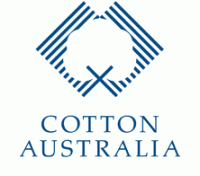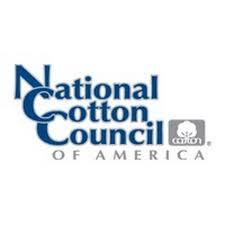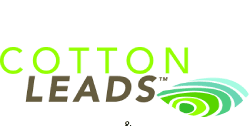Since 2014, Barnhardt Natural Fibers Group has been an active member of the Cotton LEADS ™ program, as part of its commitment to responsible and sustainable cotton production.
Today, the Cotton LEADS™ program has grown to almost 500 cotton producers, manufacturers, brands, and retail partners across 28 countries, all committed to responsible cotton production by supporting research projects and sharing best practices around the globe. Last month, L.L. Bean, the famous Maine-based retailer of outdoor gear and apparel, confirmed its commitment to sourcing responsible cotton by by joining the program.

Barnhardt also believes in this program’s mission, and we’d like to share a few of its details with our readers.
Who founded Cotton LEADS™?
 The program launched in 2013, as a joint effort of Australia’s leading cotton industry organization, Cotton Australia, and the Cotton Foundation, representing the industry here in the USA. In addition to its founders, the program has a number of supporting organizations, namely: Australian Cotton Shippers Association, National Cotton Council of America, Cotton Council International, and Cotton Incorporated.
The program launched in 2013, as a joint effort of Australia’s leading cotton industry organization, Cotton Australia, and the Cotton Foundation, representing the industry here in the USA. In addition to its founders, the program has a number of supporting organizations, namely: Australian Cotton Shippers Association, National Cotton Council of America, Cotton Council International, and Cotton Incorporated.

What are the Core Principles of Cotton LEADS™?
There are five core principles that drive the program’s initiatives for sustainability, best practices, and traceability in the supply chain for responsibly-produced cotton.
1). Commitment – to the social, environmental, economic, and regulatory factors required to produce world-class cotton.
2). Recognition – that sustainable and responsible cotton production requires continual improvement, investment, research and sharing of best practices information among growers and industry.
3). Understanding – that leading change in responsible and sustainable cotton practices will have the most positive impact when implemented in collaboration among farm, regional, national, and international programs. With collaboration, bigger change happens instead of just small, incremental changes.
4). Belief – in the benefit of working cooperatively with similar programs that seek to advance responsible and sustainable cotton production in an effort to keep global cotton competitive in world fiber markets. Sharing information globally, not just within the USA and Australia is critical.
5). Confidence – in cotton identification systems that ensure traceability from farm to manufacturer.
What benefit is the program to its members?
 As a member of Cotton LEADS™, each organization, whether a cotton farmer, manufacturer, brand, or retailer, must sign the Commitment to Cotton agreement, which aligns the goals of all parties to the commitment of supporting responsibly-produced cotton that has the requisite transparency and traceability throughout the supply chain. Cottons currently in the program – produced in Australia and the USA-include upland and pima cotton, conventionally or organically grown.
As a member of Cotton LEADS™, each organization, whether a cotton farmer, manufacturer, brand, or retailer, must sign the Commitment to Cotton agreement, which aligns the goals of all parties to the commitment of supporting responsibly-produced cotton that has the requisite transparency and traceability throughout the supply chain. Cottons currently in the program – produced in Australia and the USA-include upland and pima cotton, conventionally or organically grown.
As a member ourselves, Barnhardt Natural Fibers Group can be confident that cotton sourced from its members is responsibly produced and identified. Accountability within the supply chain is a foundation of Cotton Leads.
Members also have the opportunity to participate in research studies on a variety of topics such as water stewardship, land and soil conservation, pest management, as well as improvements for the impacts of water, energy, and chemical uses in the manufacturing process.
What is an example of member efforts that align with Cotton LEADS™ goals?
A specific example of the impressive work a key member of the program is conducting, regarding their commitment to continuous improvement, is that of the National Cotton Council. In the fall of 2017, the National Cotton Council formed a sustainability task force led by Ted Schneider, a Louisiana cotton producer, with the primary objective of “developing industry-wide goals for measurable, continual improvements in environmental stewardship, farm productivity, and resource efficiency such as land, water, air, input, and energy use.” The task force identified 6 key goals and initiatives to be pursued by 2025:
1). Land Use: -13%, Reduce amount needed to produce a pound of cotton fiber by 13%
2). Soil Loss: -50%, Reduce soil loss by 50%, in balance with new soil formation (i.e. no net soil loss)
3). Soil Carbon content: +30%, Increase soil carbon in fields by 30%
4). Water Use Efficiency: +18%, Increase water use efficiency (more fiber per gallon) by 18%
5). Energy Use Efficiency: -15%, Reduce energy required to produce seed cotton and ginned lint by 15%
6). Greenhouse Gases (Climate Change): -39%, Reduce the emitted gases from cotton production, carbon dioxide, methane, and nitrous oxide by 39%.
Barnhardt Manufacturing Co. is proud to be a member of Cotton Leads™ as a supply chain partner for responsibly grown cotton for a variety of market applications, including baby care, feminine care, medical and dental products, as well as consumer products such as swabs, cotton balls, and facial rounds.
